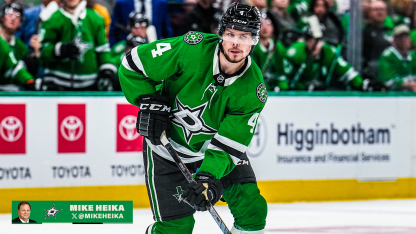And that’s the point of all of these history lessons. Yes, watch tape and game plan and “scheme,” but also be resilient and have the ability to pivot. Chemistry is real in hockey, but it also is delicate. It can ride on a line for years, as it did with Hintz, Robertson and Joe Pavelski. It can come and go, like it has with Benn and Tyler Seguin. In both cases, the coaching staff has to have a feel for when it’s clicking and when it isn’t. There is value in making the plan and there is value in implementing the plan with a certain finesse.

